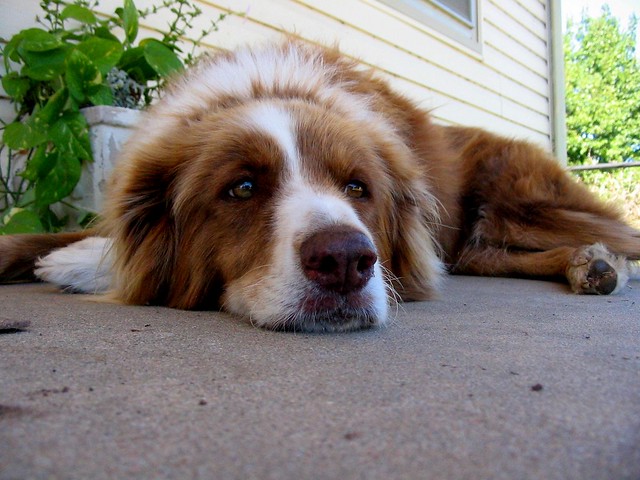Mike loves his new home. His family is wonderful, his bed is cozy, and the kids play with him all the time. The apartment is big enough so that there’s plenty of room to run around. Downstairs, there’s just enough grass between the walkways for a pup to do his business, but not much else. Overall, his new home is awesome as far as Mike is concerned.
 Unfortunately for the little rascal, things change. Time has brought the school year back around, and the children aren’t at home so often. He still had the company of their father, at least until today. A business meeting took the fella and his hat away from home- and away from Mike.
Unfortunately for the little rascal, things change. Time has brought the school year back around, and the children aren’t at home so often. He still had the company of their father, at least until today. A business meeting took the fella and his hat away from home- and away from Mike.
The morning has gone by fast for him, and he’s been trying to avoid his mischievous desires like digging in the trash or chewing on the dinosaur toy the kids left in the hallway again. But these are so difficult to resist, especially for such a young pup whose teeth are first starting to come in. The plastic toy loses a valiant battle against Mike and his fearsome puppy jaws.
Lunch time has come and gone, and poor Mike is beginning to worry. He would usually get fed by now, but no one has come home. He’s beginning to think that they’ve forgotten him. A little anxiety has begun to surface, and though he tries to reassure himself that they’ll be back, a feeling has begun to fill his belly. Lunch can be missed, but there’s one need that should always be remembered- at least if you want your pup to be housetrained.
Mike rushes to the door, but it’s locked and his little paws aren’t going to be working the doorknob any time soon. He scratches and claws at the door, fighting the urge that is worsening in his belly. He whines and begs for someone to open the door, but no one does. It’s really amazing that such a young rascal has held on for so long, but it is to no avail.
Mike knows what he did wasn’t right, but when your bladder is so tiny and your body hasn’t fully developed, you just can’t wait all day.



